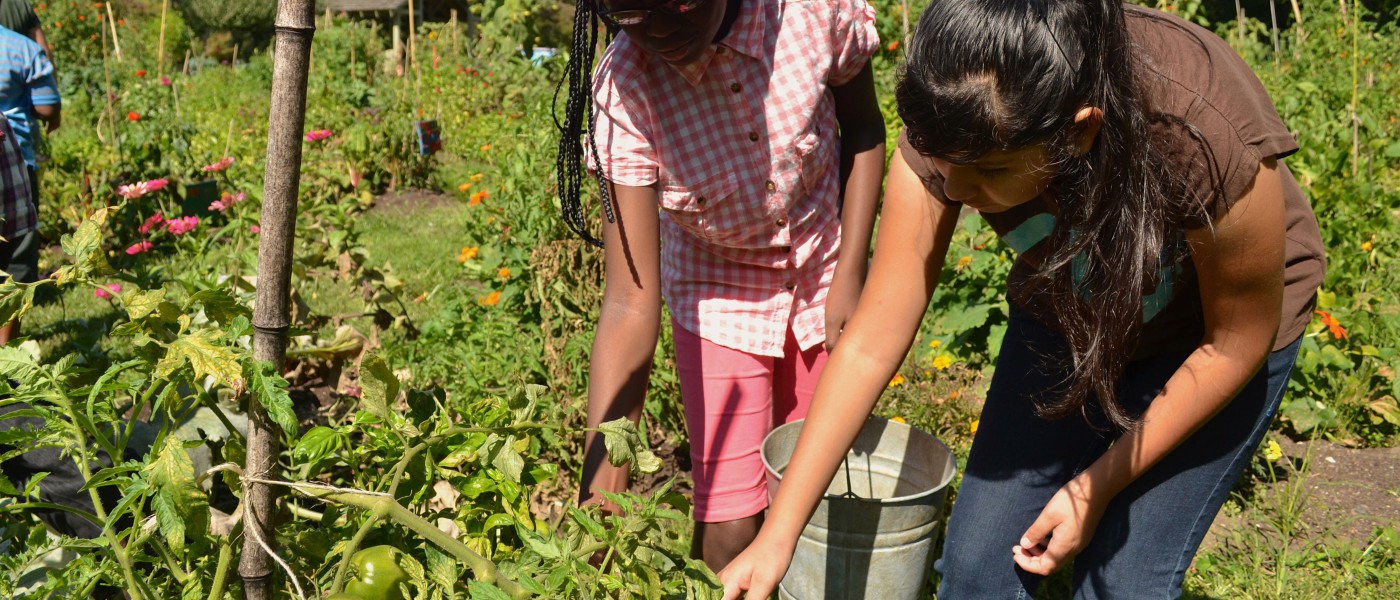Community Gardening
- About This Book
- Seeing Green: Ellen Kirby
-
- Benefits of Community Gardening
- Making the Case
- Food Gardens: Kat Shiffler, Lara Sheets, and Liz Tylander
-
- City Slicker Farms, West Oakland, California
- Community Crops, Lincoln, Nebraska
- East New York Farms!, Brooklyn, New York
- Edible Schoolyard, Berkeley, California
- Gardeners in Community Development, Dallas, Texas
- Intervale Center, Burlington, Vermont
- Nuestras Raíces, Holyoke, Massachusetts
- Youth Garden Programs: Patsy Benveniste, Eliza Fournier, Lynne Haynor, and Angela Mason
-
- The Food Project: Cody Urban
- Therapeutic Horticulture: Susan Fields
-
- Horticulture Therapy in Community Gardens
- Growing New Americans: Aaron Reser
- Pocket Parks and Small Community Gardens: Daniel Winterbottom
-
- Starting Out
- Habitat Communities: Pat and Clay Sutton
- Learning from Plants and Wildlife: Marilyn Smith
- Making Gardens Sustainable: Lenny Librizzi
- Site Protection
- Rainwater Harvesting
- Soil Health and Safety: Ulrich Lorimer
- The Magic of Compost
- Bringing Community Into the Garden: Robin Simmen
-
- Access, Fences, and Beyon
- Tips for Political Action
- Resources
- Contributors
- Index
Introduction
About This Book
Elizabeth Peters
In cities and towns across North America, community gardening is flourishing. The American Community Gardening Association estimates that in the U.S. alone there are 18,000 to 20,000 active gardens. The gardens are large and small; formal and informal; urban, suburban, and rural. They operate on municipal land, land trusts, and private land; many are official, others are guerrilla acts of cultivation. Some community gardens are organized by hundreds of gardeners, others by just a handful. Some gardens allot plots to individuals; in others, gardeners work collectively. Community gardeners grow food or flowers, or curate art or natural features. The common element is that all of these gardens are created and maintained by members of the community for the benefit of the community.
Helping people improve their daily lives through the cultivation and enjoyment of plants is a core mission of Brooklyn Botanic Garden and its GreenBridge community environmental horticulture program, which since 1993 has provided practical support for community gardeners throughout Brooklyn and beyond. This book is Brooklyn Botanic Garden’s effort to recognize the great work of this movement, but, as such, it can only scratch the surface in describing community gardening today. The book opens with a chapter highlighting the myriad benefits of community gardening and closes with a recap of all the ways these gardens can be vital neighborhood resources. In between, the authors examine specific types of garden programs and strategies. This book doesn’t cover the nuts and bolts of starting a garden, but refers you to some excellent organizations that do. At the back of the book you can find these and other essential resources; a special companion web page (bbg.org/cg) hosts interactive links to an expanded resource list.
Greening, sustainable living, and learning about food are becoming top priorities in North America, and community gardens directly address these issues and more. If you are curious about community gardening, the programs that are described here may inspire you to get involved. And if you’re already an active community gardener, this book may help you tell your own story, and perhaps even help you strengthen or expand your garden’s work.


